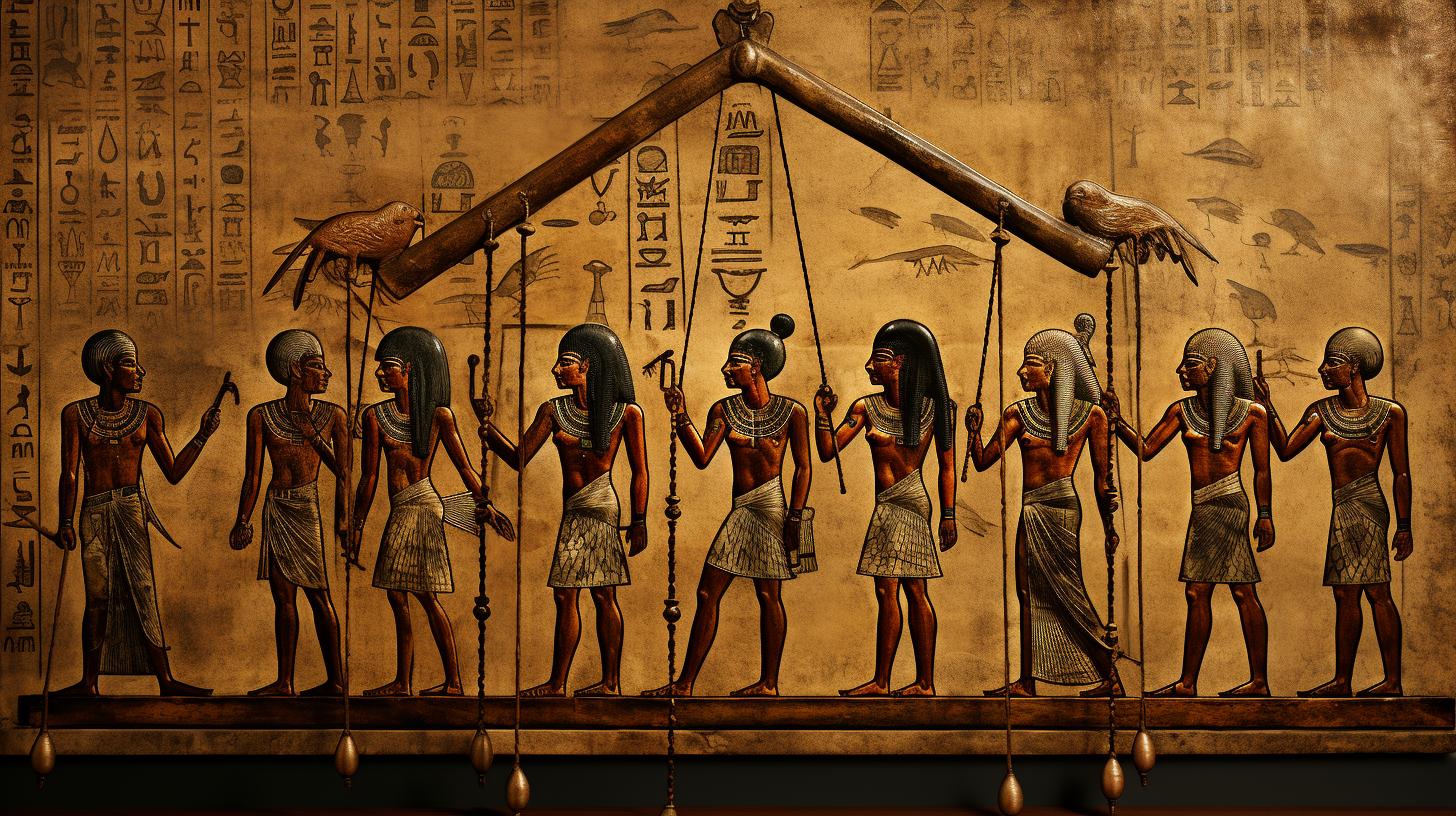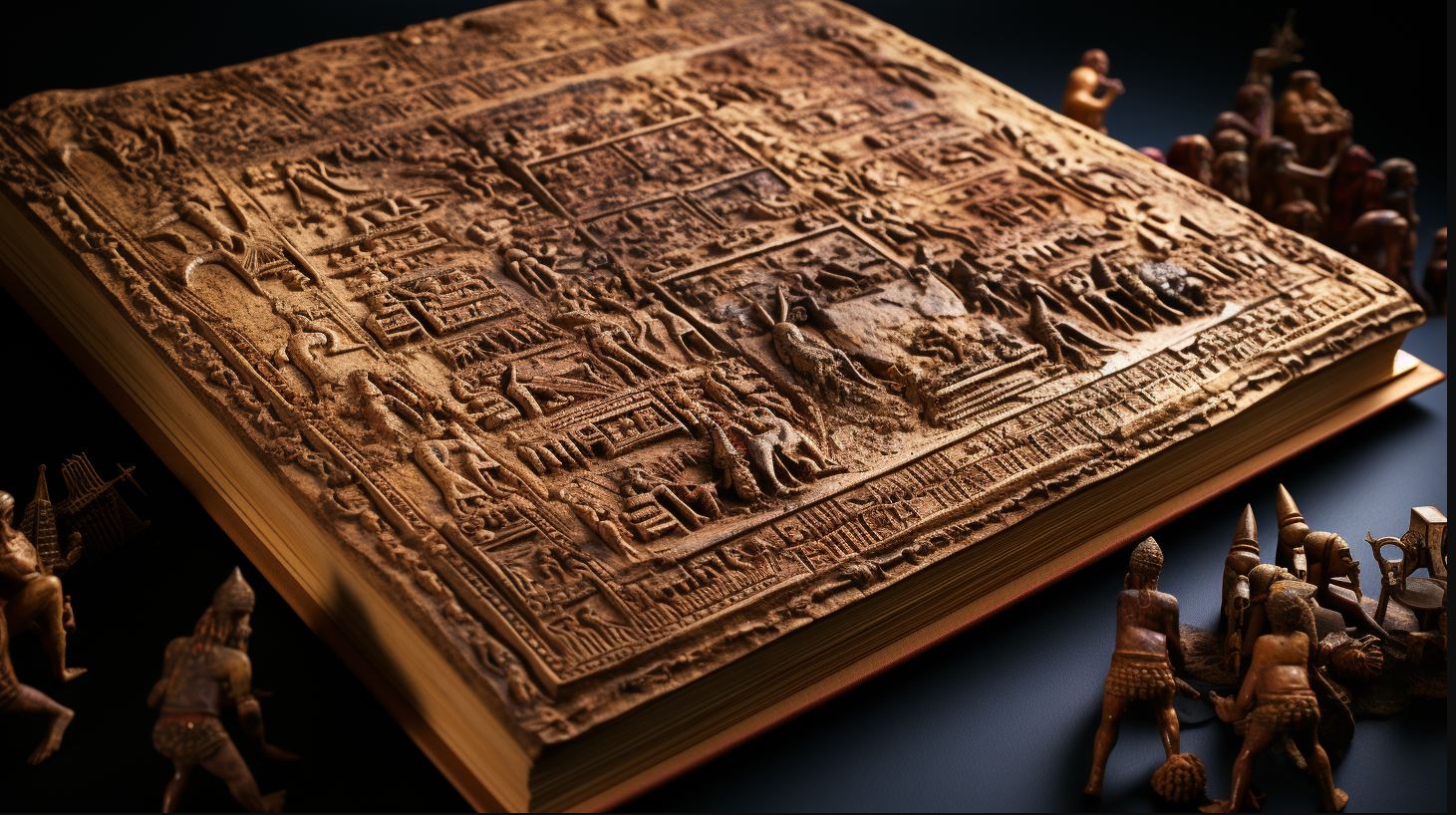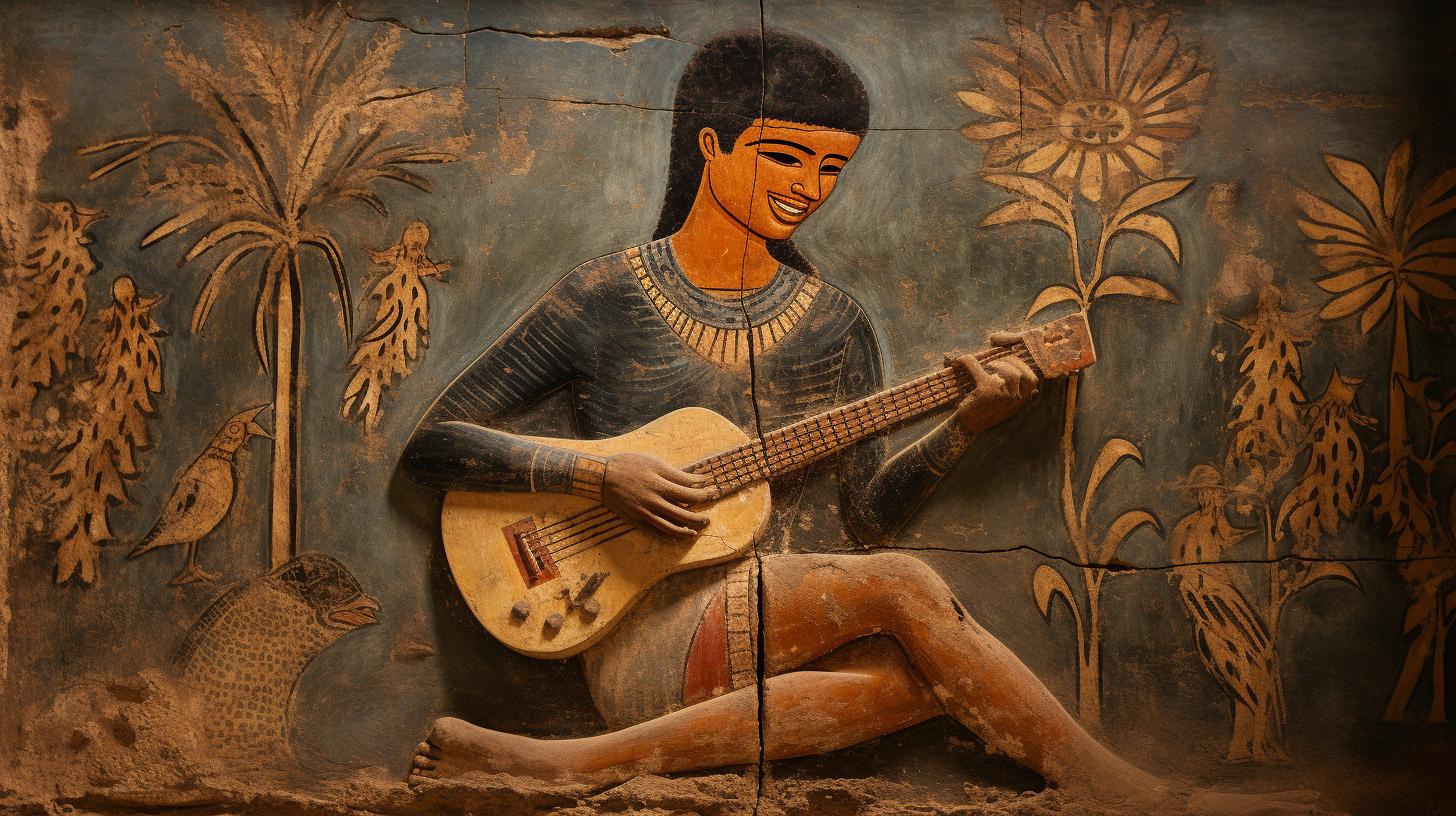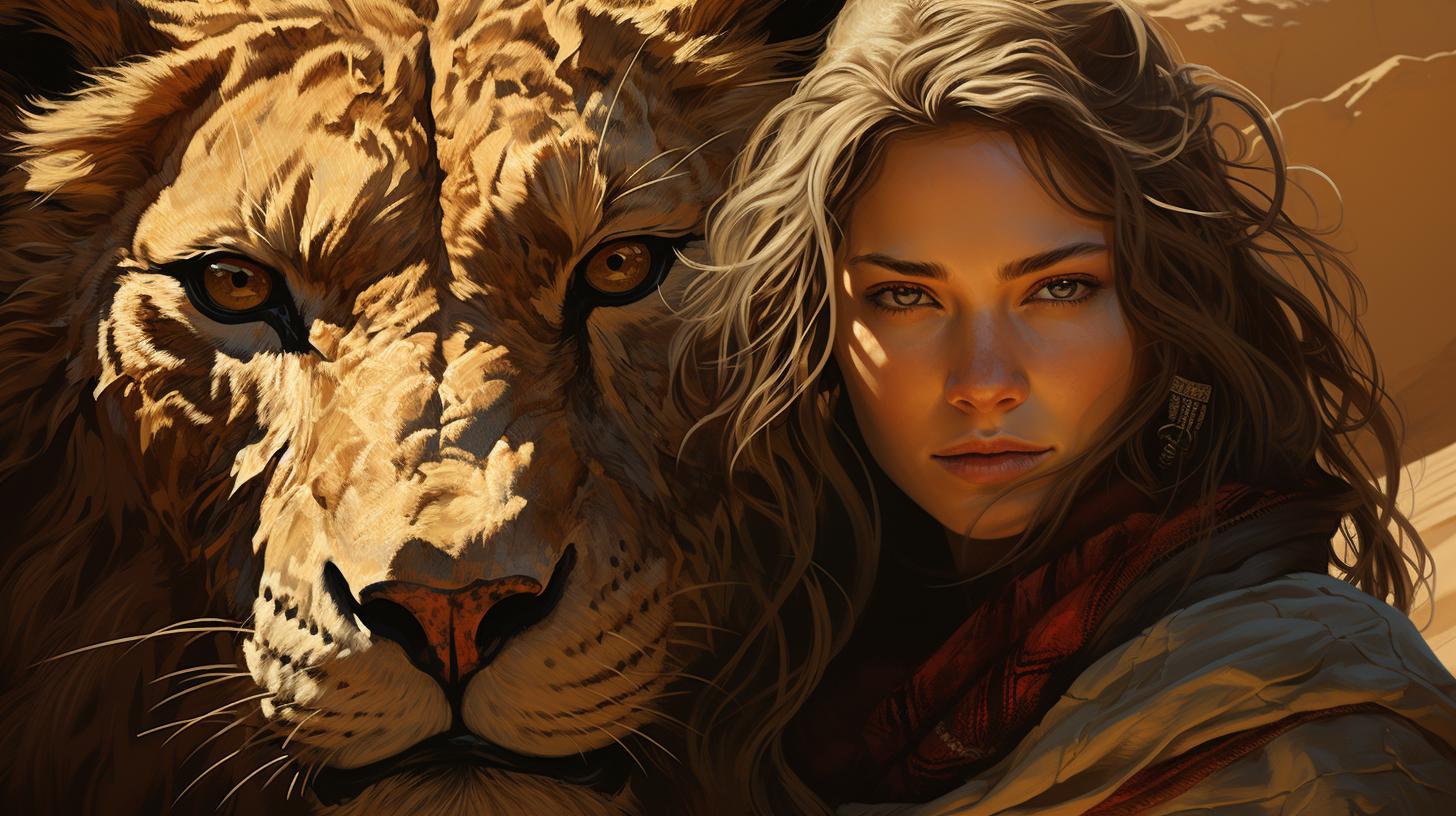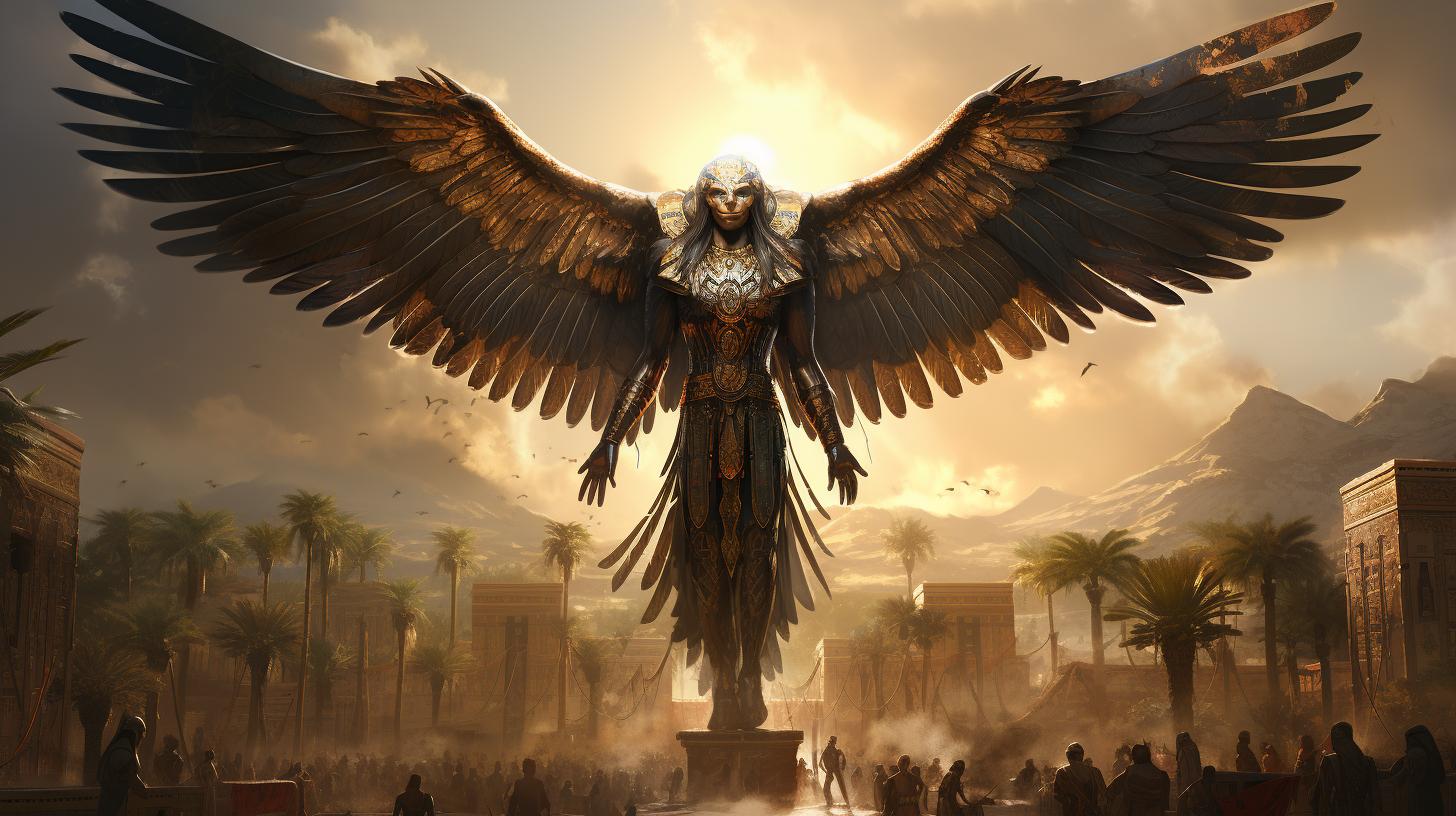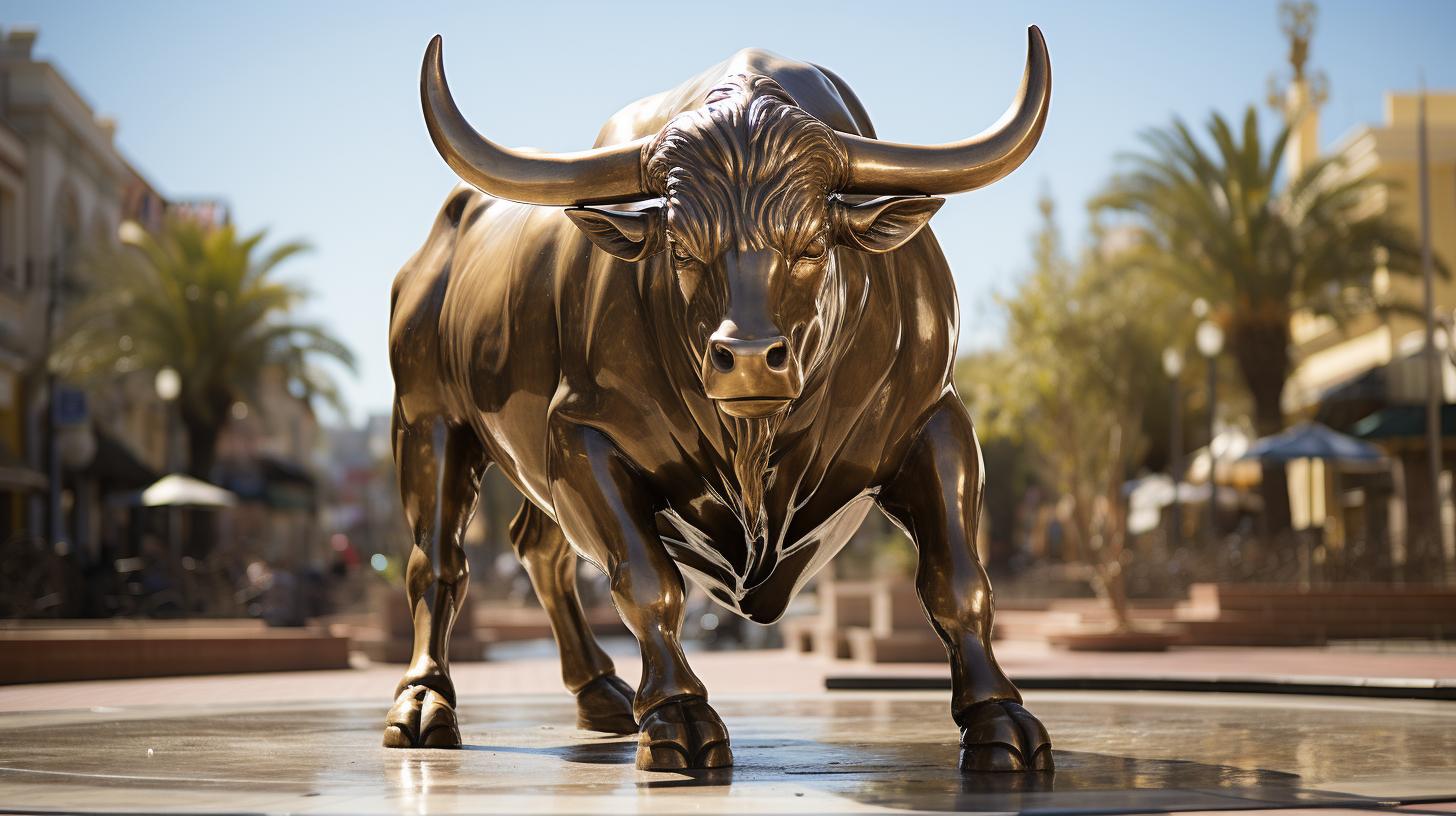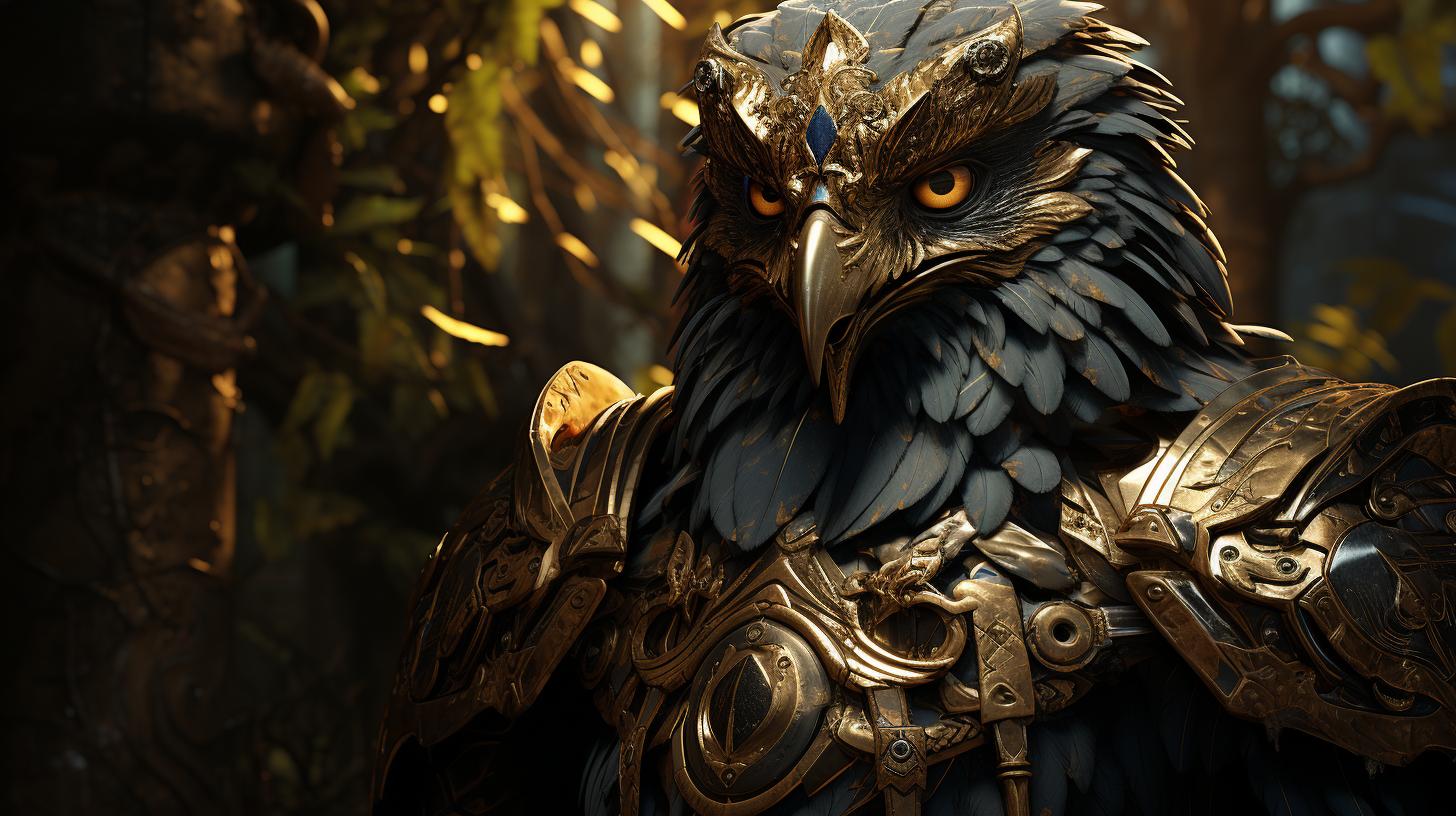The Weighing of the Heart and Judgment by Osiris: An Ancient Egyptian Ritual
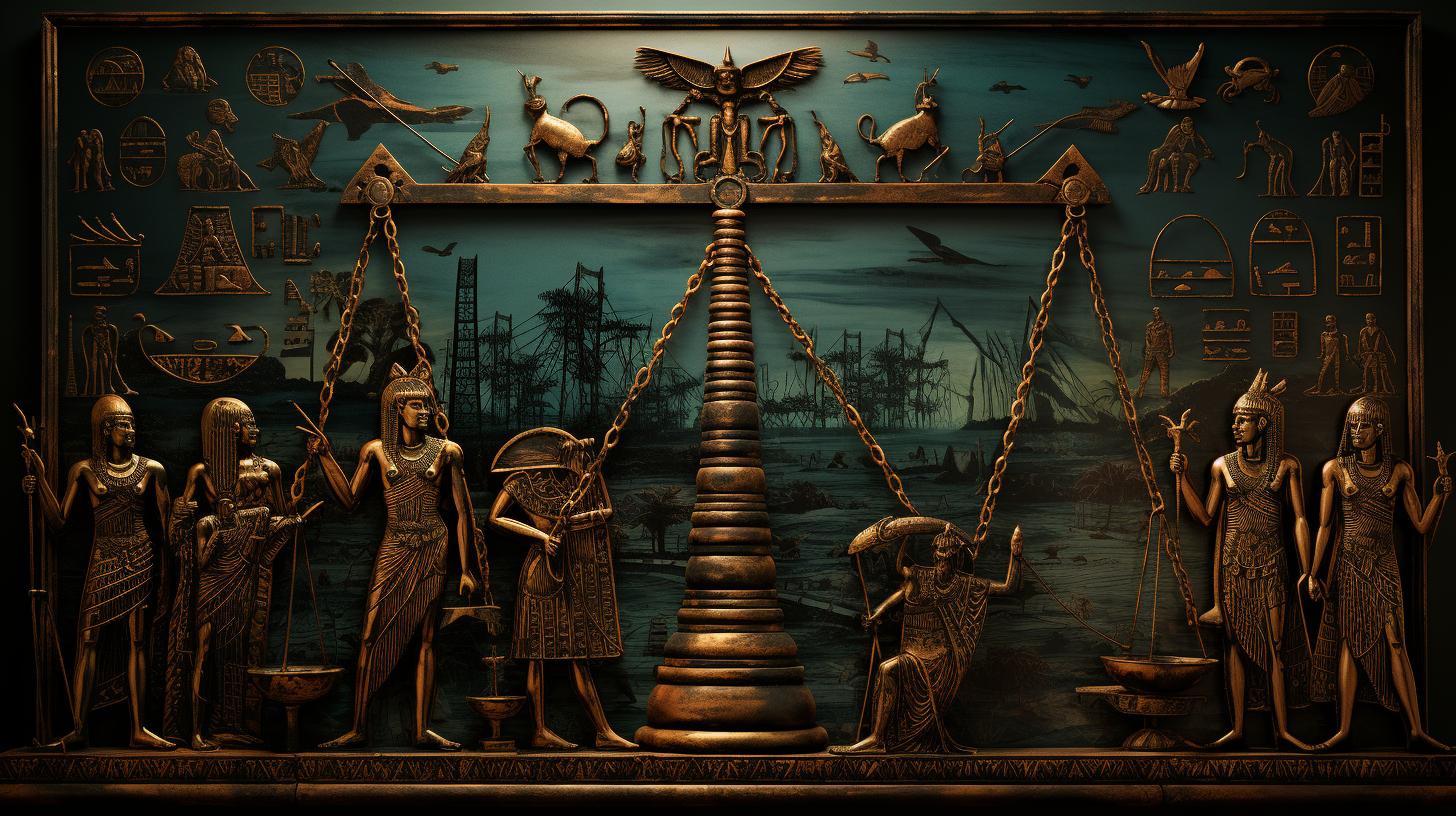
The ancient Egyptians believed in a unique afterlife system, where the body and soul were separated and judged in the Hall of the Two Truths by the god Osiris, the lord of the underworld.
This judgment was based on the heart of the deceased, which was weighed against the feather of Maat, the goddess of justice and balance. If the heart was pure, the deceased would achieve eternal peace in the afterlife, but if it was heavy with wrongdoing, the heart would be devoured by the monster Ammut, resulting in eternal death.
The Ancient Egyptian Ritual: The Weighing of the Heart and Judgment by Osiris
The ancient Egyptians believed that there was a distinctive system of the afterlife which involved the separation and judgment of the body and soul in the Hall of the Two Truths by the god Osiris, who was the ruler of the underworld.
The assessment was made based on the heart of the deceased, which was weighed against a feather of Maat, the goddess responsible for justice and balance. The whole process was referred to as ‘the weighing of the heart and judgment by Osiris‘.
The ritual of ‘the weighing of the heart and judgment by Osiris‘ was a crucial part of ancient Egyptian culture and religion. The ceremony involved several divine beings, including Osiris, Maat, Anubis, and Thoth. The Hall of the Two Truths was the setting for the ceremony, and it was where the judgment of the deceased occurred.
The Belief System of the Ancient Egyptians
The ancient Egyptians had a rich belief system that was centered around the afterlife. They believed in the existence of gods and goddesses who governed different aspects of life, including death, the sun, and the floods of the Nile River.
These deities were crucial to the success and prosperity of the ancient Egyptian civilization.
The Weighing Ceremony: A Detailed Description
The ceremony of ‘the weighing of the heart and judgment by Osiris‘ was a detailed process that involved several important participants. The assessment was conducted in the Hall of the Two Truths, with Osiris, the god of the afterlife, presiding over the ceremony.
The deceased’s heart was weighed against a feather of Maat by Anubis, the god of mummification and protector of the dead. Thoth, the god of wisdom, acted as the scribe, recording the results of the weighing.
The Role of Maat in the Weighing Ceremony
Maat, the goddess of justice and balance, was responsible for the feather that was used to weigh the deceased’s heart. The symbol of the feather of Maat was meant to represent balance and harmony in the universe.
The goddess Maat was also responsible for maintaining order and balance in the world of the living.
Significance of the Weighing Ceremony in Ancient Egyptian Culture and Religion
The ritual of ‘the weighing of the heart and judgment by Osiris‘ was significant in ancient Egyptian culture and religion. The ceremony was meant to ensure that the deceased were judged fairly and that the balance of the universe was maintained.
The concept of an afterlife with rewards for a pure heart was a crucial part of ancient Egyptian religion and culture. The weighing ceremony played an instrumental role in determining the fate of the deceased in the afterlife.
The Aftermath of the Judgment: A New Life for the Deceased?
The aftermath of the judgment of ‘the weighing of the heart and judgment by Osiris‘ resulted in either a new eternal life or eternal death. If the heart of the deceased was found to be pure and light as a feather, then the individual was granted eternal peace in the afterlife.
However, if the heart was heavy with impurities, the beast Ammut would consume it, and the individual would suffer eternal death.
Museum Collections and Exhibits about the Weighing of the Heart in Ancient Egypt
Several museums around the world house collections of ancient Egyptian artifacts, including those related to ‘the weighing of the heart and judgment by Osiris‘. The exhibits explore the beliefs and customs of ancient Egypt and showcase the different elements of the ceremony, including the Hall of the Two Truths and the weighing process.
Collections of artifacts related to ‘the weighing of the heart and judgment by Osiris‘ can be found in museums such as the British Museum and the Museum of Egyptian Antiquities in Cairo.
- The Top Museums with Ancient Egyptian Collections
- The Most Popular Exhibits about the Weighing of the Heart
- The Impact of Museums in Preserving and Educating about Ancient Egyptian Culture
The Belief System of the Ancient Egyptians
The ancient Egyptians had a complex religious system that incorporated numerous gods and goddesses who had a significant influence on all aspects of life.
The gods had both human and animal forms, and individuals often worshipped a particular god or goddess who they believed could help them with specific issues.
The Role of the Gods in Ancient Egyptian Beliefs
The gods and goddesses of ancient Egypt had different roles that reflected different aspects of life. For example, Ra was the god of the sun, and his role in the Egyptian belief system was to represent light, warmth, and vitality.
Isis, on the other hand, was the goddess of fertility and motherhood, and her role was to protect women during childbirth and help families during times of need. Other important gods and goddesses include Osiris, who was the god of the afterlife and judgment, and Horus, who was the god of the sky.
The Journey of the Deceased into the Netherworld
Ancient Egyptians believed that after death, the human soul would begin a journey towards the afterlife. During this journey, individuals would encounter many obstacles, such as demons and monsters, which they had to overcome to reach the netherworld.
The belief system also held that different levels of the afterlife existed, with the most significant one being eternal paradise, where the soul could enjoy a beautiful afterlife with the gods.
The Importance of the Book of the Dead
The Book of the Dead was an essential part of the ancient Egyptian belief system. It was a collection of spells and prayers that was meant to help the soul navigate through the afterlife.
These spells were written on papyrus scrolls and often accompanied the deceased in their tombs. The idea behind the Book of the Dead was that the spells would help the soul navigate through the dangerous journey to the afterlife and ultimately reach eternal paradise.
Some important spells found in the Book of the Dead include:
- “The Opening of the Mouth” spell, which was meant to restore the senses of the deceased.
- “The Weighing of the Heart” spell, which describes the weighing ceremony that would determine whether the deceased would enter the afterlife or not.
- “The Negative Confessions,” which were a series of denials for sins that the deceased might have committed during their lifetime.
The spells found in the Book of the Dead were crucial to the ancient Egyptian belief system, as they were meant to ensure a safe and prosperous journey into the afterlife.
The Weighing Ceremony: A Detailed Description
The ancient Egyptian belief that the dead had to pass through a judgment to gain access to the afterlife was based on the concept of Maat. The Weighing of the Heart ceremony was a crucial part of this process and took place in the Hall of the Two Truths.
This ceremony was a detailed process that involved the weighing of the heart of the deceased against the feather of Maat.
The Setting of the Ceremony: The Hall of the Two Truths
The Hall of the Two Truths was the designated site for the Weighing of the Heart ceremony. This hall was believed to exist in the underworld, where Osiris ruled.
The hall had two large pillars on either side, which were decorated with alternating ostrich feathers and cobras.
The cobras were symbols of protection and the ostrich feathers represented Maat. Two goddesses of Maat accompanied the deceased to the hall and stood by during the ceremony.
The Divine Beings Involved in the Ceremony
The Weighing of the Heart ceremony involved various divine beings, including Osiris, Anubis, and Thoth. Osiris, the king of the underworld, sat on a throne overseeing the ceremony, while Anubis, the jackal-headed god, weighed the heart of the deceased.
Thoth, the ibis-headed god, acted as the scribe, recording the results of the ceremony. The 42 judges, each with a feather of Maat on their heads, were also present during the ceremony, sitting in two rows above the scene.
The Process of Weighing the Heart Against the Feather of Maat
During the Weighing of the Heart ceremony, the deceased’s heart was extracted and placed on a scale. Anubis would then weigh the heart, while Maat‘s feather was placed on the other side of the scale.
The heart was considered heavy and impure if it was found to be corrupt or immoral, and it would not balance with the feather of Maat. In that case, the heart would be given to Ammut, who would devour it, and the individual would face eternal death.
However, if the heart was light and pure, it would balance with the feather of Maat, and the individual would be granted eternal life in the afterlife.
In summary:
- The Weighing of the Heart ceremony was a crucial part of the judgment process in ancient Egyptian beliefs.
- The ceremony took place in the Hall of the Two Truths where the heart of the deceased was weighed against the feather of Maat.
- Divine beings such as Osiris, Anubis, and Thoth were involved in the process.
- If the heart balanced with the feather of Maat, the deceased would be granted eternal life.
Otherwise, the individual would face eternal death.
In conclusion, the Weighing of the Heart ceremony was an important and elaborate process in ancient Egyptian culture, which held great significance for the judgment and afterlife of the deceased.
The Role of Maat in the Weighing Ceremony
Maat was the goddess of truth, justice, and harmony, as well as a symbolic representation of fundamental values that Egyptians considered crucial for their existence. Her name means “truth,” “justice,” or “righteousness” and was central to many aspects of Ancient Egyptian society.
In the ‘Weighing of the Heart’ ritual, Maat was represented as a feather, which was placed on one side of the scale opposite the heart of the deceased.
The Goddess Maat and her Symbolism
Maat was often depicted carrying a scepter and wearing an ostrich feather, which signified her role in maintaining cosmic order and harmony within the universe. She was also typically shown wearing a crown with two tall plumes and sometimes had wings herself.
At times, she was portrayed as a young woman or as a mother who cradled the pharaoh like a child, as the ruler of Ancient Egypt was seen as a spiritual son of the goddess.
Maat‘s role was essential in ensuring that the world continued to function properly, and her depictions were prominent in the Heliopolitan creation myth and the Coffin Texts.
The Relationship between Maat and the Judgment of the Deceased
The feather of Maat symbolized balance and order in Ancient Egyptian culture, and the weighing was conducted to ensure the morality of the deceased. The heart of the deceased had to balance against the feather as an indication of righteousness, and if it did, the deceased would be allowed into the afterlife.
Maat played a vital role in determining one’s fate and ensured that the right of the individual was maintained in the event of wrongdoing. Her role in the ceremony emphasized the importance of balance and justice, and her symbolism remains significant in modern times.
- Maat has been depicted in numerous works of art, including tomb and temple reliefs, sarcophagi, and other artifacts.
- The goddess’s importance was not limited to the ritual of ‘Weighing of the Heart’; Maat‘s name was invoked in numerous administrative, legal, and moral contexts, making it an essential concept in Ancient Egyptian culture and society.
- While the weighing and the goddess Maat are commonly associated with death and the afterlife, her depiction also carries symbolic significance in celebration of life, particularly in those moments where events are in balance and harmony.
Summary
Maat played an essential role in the ‘Weighing of the Heart’ ceremony that determined the morality of the deceased.
Her symbol, the feather, represented the balance and justice necessary to maintain harmony in the universe. Maat‘s depictions were prominent in Ancient Egyptian mythology, art, and society, emphasizing the importance of balance and rightness.
Significance of the Weighing Ceremony in Ancient Egyptian Culture and Religion
The ancient Egyptians’ belief in an afterlife was intricately tied to their intricate rituals and impressive constructions, with the “Weighing of the Heart Ceremony” represented one of the most significant and memorable aspects of their beliefs.
The Beliefs Related to the Afterlife in Ancient Egypt
- Ancient Egyptians believed that the heart was the source of a person’s essence, rather than the brain.
- They believed that upon death, the deceased needed to pass through a series of trials and tests, including the “Weighing of the Heart” ceremony, before they could reach the afterlife.
- The ceremony was prominently featured in funerary texts, including the “Book of the Dead,” and was believed to determine a person’s physical and spiritual fortune in the afterlife.
The Legacy of the Weighing Ceremony in Ancient Egyptian Art
The “Weighing of the Heart” ceremony was also a popular subject in ancient Egyptian art and provided insight into their beliefs and customs.
Several ancient Egyptian artifacts depict the ceremony, including:
- “Hunefer’s Judgment in the presence of Osiris,” a section of the “Book of the Dead” which provides a detailed account of the ceremony
- The Papyrus of Ani, which depicts the ceremony and includes images of the various gods and goddesses
The Influence of Ancient Egyptian Religion on Modern Research and Culture
The ancient Egyptian religion and its belief in the afterlife have had a profound effect on modern research and culture, inspiring several writers, artists, and historians.
The “Weighing of the Heart” ceremony, in particular, has been a subject of fascination for researchers looking to understand the beliefs and customs of ancient societies.
The ceremony has also inspired contemporary art, music, film, and literature, with depictions of the ceremony appearing in various forms of media, including:
- The film “The Mummy,” which features a depiction of the ceremony and other elements of ancient Egyptian beliefs and folklore
- The video game series “Assassin’s Creed,” which features a storyline set in ancient Egypt and includes depictions of the ceremony and other aspects of ancient Egyptian culture
The Aftermath of the Judgment: A New Life for the Deceased?
After the weighing of the heart, the deceased’s new life was determined based on the outcome of the judgment.
If the heart was balanced with the feather of Maat, the individual was allowed to continue to the afterlife and experience eternal peace and happiness. However, if the deceased’s heart was heavier than the feather, it was devoured by Ammut, and they were condemned to eternal death.
The Consequences of a Balanced Heart
A balanced heart meant the individual was deemed pure and able to continue in the afterlife. Depending on the person’s status, they could either live in peace, serve the gods, or continue their journey to other regions of the afterlife.
The belief in a balanced heart was so vital that the Ancient Egyptians often portrayed it as the goal of human life. The Book of the Dead was considered an essential guide to achieving this goal.
The Devourer of the Dead and what it Signifies
The Devourer of the Dead, Ammut was a creature that represented the destruction of the soul. Her role was to eat the hearts of the impure, thereby eliminating them from the afterlife entirely.
The Ancient Egyptians believed that Ammut was always present during the judgment ceremony as a reminder of the consequences of not following the principles of Maat.
The image of Ammut reminded people to live according to the principles of Maat in daily life, as this was a prerequisite for eternal life in the afterlife. If one’s heart was unable to balance with the feather of Maat during the judgment ceremony, Ammut would be waiting to devour their heart and deny them the chance of eternal rest.
The Role of Osiris in the Afterlife
Osiris was the god of the underworld and responsible for the weighing of the heart ceremony. By passing through the judgment process, individuals were granted entry into the afterlife and, in some cases, further assistance from Osiris.
The Ancient Egyptians believed that Osiris protected the souls of his followers, ensuring they were able to live on and continue their journey in the afterlife. This belief had a significant impact on Ancient Egyptian culture, as it provided comfort, hope, and a sense of purpose to followers as they confronted the unknowns of the afterlife.
Museum Collections and Exhibits about the Weighing of the Heart in Ancient Egypt
The weighing of the heart ceremony has become a popular topic for museum exhibits, as it provides visitors with a unique insight into Ancient Egyptian beliefs and culture.
Museums around the world host exhibits on Ancient Egypt, which often feature the afterlife and the weighing of the heart ceremony prominently. Some popular exhibits include:
- ‘Hunefer’s Judgement in the presence of Osiris‘ found in the British Museum
- ‘The Ancient Egyptian Book of the Dead‘ found in the Metropolitan Museum of Art
- ‘The Tomb of Tutankhamun’ in the Egyptian Museum in Cairo
These exhibitions give visitors the opportunity to experience the rich history, beliefs, and practices of Ancient Egypt, including the famous weighing of the heart ceremony.
Museum Collections and Exhibits about the Weighing of the Heart in Ancient Egypt
One of the most fascinating aspects of the Weighing of the Heart ceremony is the incredible array of ancient artifacts and exhibits on display in some of the world’s most famous museums.
The collections of these museums offer a unique window into the Ancient Egyptian culture and religion and allow us to explore the beliefs and values of this incredible civilization.
The Top Museums with Ancient Egyptian Collections
- The British Museum – London, UK
- The Louvre – Paris, France
- The Egyptian Museum – Cairo, Egypt
- The Metropolitan Museum of Art – New York City, USA
- The National Museum of Egyptian Civilization – Cairo, Egypt
These museums boast some of the most extensive and well-curated collections of Ancient Egyptian artifacts in the world and offer a comprehensive overview of the Weighing of the Heart ceremony, along with other aspects of Ancient Egyptian culture and religion.
Visitors can see everything from intricate death masks and sarcophagi to stunning wall reliefs and papyri.
The Most Popular Exhibits about the Weighing of the Heart
- Hunefer’s Judgement in the Presence of Osiris – British Museum
- The Weighing of the Heart scene – Book of the Dead – Turin Museum
- The Tomb of Tutankhamun – Egyptian Museum of Antiquities
- Death on the Nile: Uncovering the Afterlife of Ancient Egypt – Metropolitan Museum of Art
- The Judgment of the Dead – Louvre
These exhibits offer a detailed insight into the Weighing of the Heart ceremony and its significance, along with other aspects of Ancient Egyptian culture and religion.
They allow visitors to see the intricacies of the ceremony, the symbolism behind it, and the role of Maat, the goddess of balance and justice, in the judgment of the deceased.
The Impact of Museums in Preserving and Educating about Ancient Egyptian Culture
These museums play a vital role in preserving and educating visitors about the incredible culture and religion of Ancient Egypt. Through their exhibits, conservation efforts, and educational programs, museums around the world enable us to learn more about the beliefs, values, and lifestyles of the people who once inhabited this fascinating civilization.
The displays and collections within these museums offer a unique opportunity to experience the beauty and majesty of Ancient Egypt, and to understand the deeper meaning behind the Weighing of the Heart ceremony and other elements of Ancient Egyptian culture and religion.

